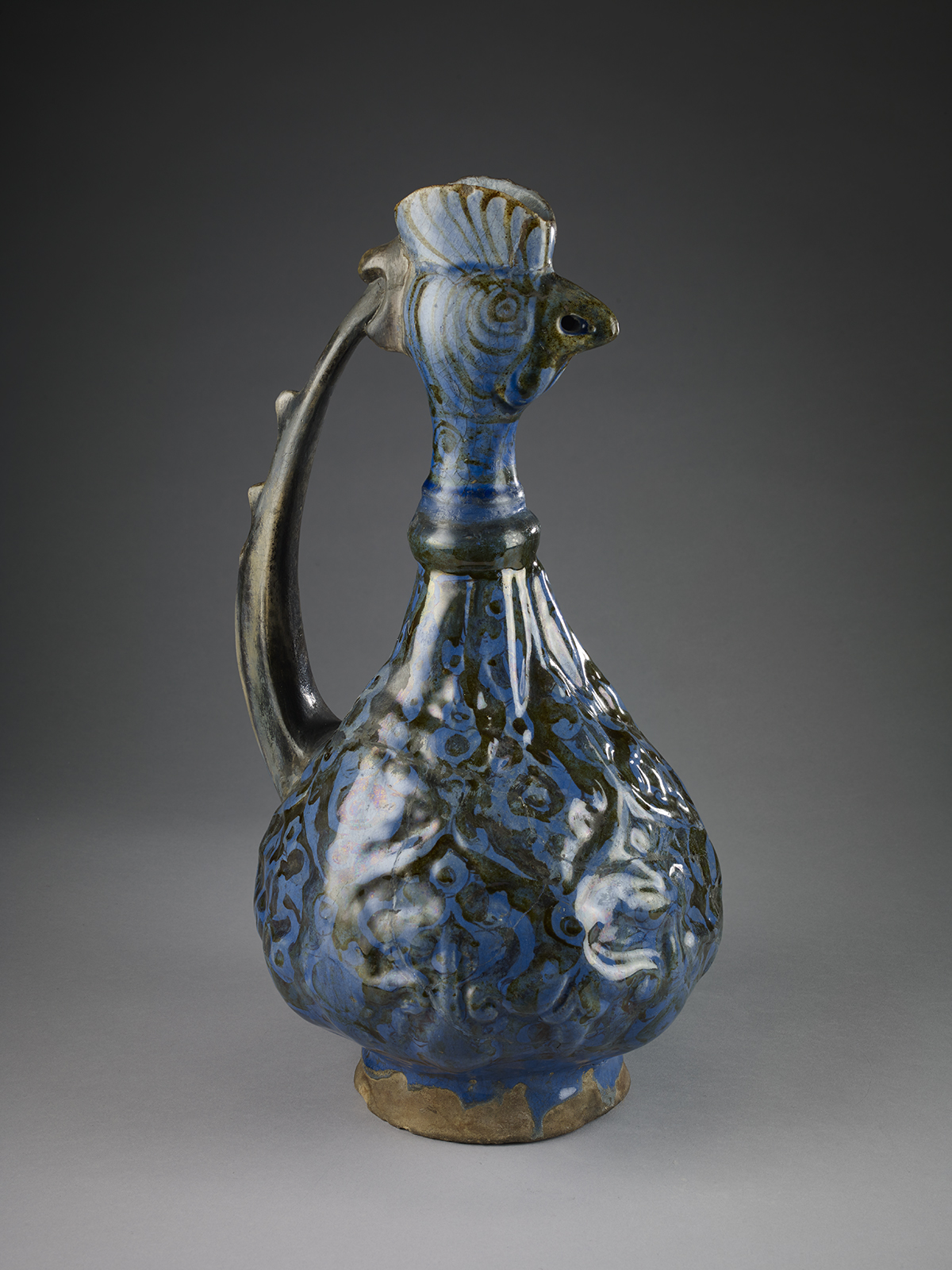Click on the image to zoom
Cockerel-Headed Ewer
- Accession Number:AKM766
- Place:Iran, Kashan
- Dimensions:36.8 x 66 cm
- Date:late 12th to early 13th century
- Materials and Technique:fritware, moulded, cobalt glaze with brown decoration under a transparent glaze (and later overglaze brown painting)
-
33. Bellerive Room
Stop #6 of Bellerive Room Highlights (This object is currently on display in the Permanent Gallery)
Pitchers shaped like animals have enjoyed such popularity that they have a special name: aquamanile, an Italian term that is used to describe all of these objects, whether they were made in Europe, Asia, or the Middle East. This particular example has a spout in the form of a rooster.
— Marika Sardar
Next up in the Bellerive Room Highlights Tour:
Note: This online resource is reviewed and updated on an ongoing basis. We are committed to improving this information and will revise and update knowledge about this object as it becomes available.


 Bowl with Horse and Rider,
Bowl with Horse and Rider,